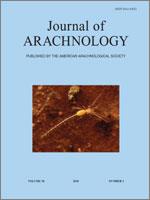The hypothesis that fluorescence in scorpions functions in the detection of ultraviolet light was tested. We reduced the fluorescence of scorpions by prolonged exposure to ultraviolet light on a 16:8 h light:dark cycle and compared their activity levels and light environment choices to unmodified scorpions in simple arenas that were half in shadow and half exposed to light. Three different lighting conditions were tested: infrared (IR) light only, IR ultraviolet light and IR white light. Treatments were illuminated by infrared light for videotaping. Activity level was measured by the number of transitions from the exposed to shadowed regions, and choice was measured by the percentage of time spent in the shadowed portion of the arena. Under IR ultraviolet light, fluorescent scorpions reduced their activity levels and the variance in habitat choice increased, compared with reduced-fluorescence scorpions. There were no differences between fluorescent and non-fluorescent scorpions in the IR only condition or in the IR white light condition. This is interpreted as evidence that fluorescence aids in the detection of and response to ultraviolet light, and possible implications of this result in natural habitats are discussed. This is the first experimental demonstration of a possible function for scorpion fluorescence.
How to translate text using browser tools
1 December 2010
Ultraviolet light detection: a function of scorpion fluorescence
Carl T. Kloock,
Abraham Kubli,
Ricco Reynolds
ACCESS THE FULL ARTICLE

The Journal of Arachnology
Vol. 38 • No. 3
December 2010
Vol. 38 • No. 3
December 2010
habitat choice
light responses
Moonlight avoidance




